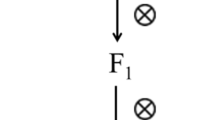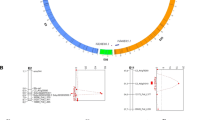Summary
In vitro microspore mutagenesis and selection was used to produce five fertile double-haploid imidazolinone-tolerant canola plants. The S2 plants of three of the mutants were resistant to at least the field-recommended levels of Assert and Pursuit. One mutant was tolerant to between five and ten times the field-recommended rates of Pursuit and Scepter. Two semi-dominant mutants, representing two unlinked genes, were combined to produce an F1 hybrid which was superior in imidazolinone tolerance to either of the heterozygous mutants alone. Evaluation of the mutants under field conditions indicated that this hybrid and the original homozygous mutants could tolerate at least two times the field-recommended rates of Assert. The field results indicated the mutants were unaffected in seed yield, maturity, quality and disease tolerance. These genes represent a potentially valuable new herbicide resistance system for canola, which has little effect on yield, quality or maturity. The mutants could be used to provide tolerance to several imidazolinones including Scepter, Pursuit and Assert.
Similar content being viewed by others
References
Anderson PC, Georgeson MG (1989) Herbicide tolerant mutants in corn. Genome (in press)
Beversdorf WD, Hume DJ (1984) OAC Triton spring rapeseed. Can J Plant Sci 64:1007–1009
Chaleff RS, Ray TB (1984) Herbicide resistant mutants from tobacco cell cultures. Science 223:1148–1151
Choung PV, Beversdorf WB (1985) High frequency embryogenesis through isolated microspore culture in Brassica napus L. and B. carinata Braun. Plant Sci 39:219–226
Creason GL, Chaleff RS (1988) A second mutation enhances resistance of tobacco mutant to sulfonyurea herbicides. The-or Appl Genet 76:177–182
Daun JK, Mazur PB, Marek CJ (1983) Use of gas liquid chromatography for monitoring the fatty-acid composition of Canadian rapeseed. J Am Chem Soc 60:1751–1754
Gabrielson RL (1983) Blackleg disease of Crucifers caused by Leptosphaeria maculans (Phoma lingam) and its control. Seed Sci Technol 11:749–780
Gamborg OL, Miller RA, Ojima K (1968) Nutrient requirements of suspension cultures of soybean root cells. Exp Cell Res 50:151–158
Genser MV, Eskin NA (1987) Canola oil: properties and performance. The Canola Council of Canada, Winnipeg 60:10–15
Haughn GW, Somerville C (1986) Sulfonylurea-resistant Arabidopsis thaliana. Mol Gen Genet 204:430–434
Heaney RK, Fenwick GR (1980) The analysis of glucosinolates in Brassica using gas-chromatography. J Agric Food Chem 31:593–599
Keller WA, Armstrong KC (1983) Production of Brassica napus haploids through anther and microspore culture. Proc 6th Int Rapeseed Congr Paris, pp 239–245
Lichter R (1982) Induction of haploid plants from isolated pollen of Brassica napus. Z Pflanzenphysiol 105:427–434
Lichter R (1985) From microspores to rape plants: A tentative way to low glucosinolate strains in world crops. In: Sorensen H (ed) Production, utilization, description, vol 11. Nijhoff/ Junk, Dordrecht, pp 268–277
Maltais B, Bouchard CJ (1978) Une moutarde des oiseaux (Brassica rapa L.) resistantes a l'atrazine. Phytoprotection 59:117–119
Newhouse KE, Shaner DL, Wang T, Fincher R (1989) Genetic modification of crop responses to imidazolinone herbicides. Am Chem Soc Symp (in press)
Ray TB (1984) Site of action of chlorsulfuron. Plant Physiol 75:827–831
Saxena PK, King J (1988) Herbicide resistance in Datura innoxia. Plant Physiol 86:863–867
Schloss PK, Ciskanik LM, VanDyk DE (1988) Origin of the herbicide binding site of acetolactate synthase. Nature 331:360–362
Sebastien SA, Chaleff RS (1987) Soybean mutants with increased tolerance for the sulfonyurea herbicides. Crop Sci 27:948–952
Shaner DL, Anderson PC (1985) Mechanism of action of the imidazolinones and cell culture selection of tolerant maize. In: Zaitlin M, Day PR, Hollaender A (eds) Biotechnology in plant science. Academic Press, New York, pp 287–300
Shaner DL, Anderson PC, Stidman MA (1984) Imidazolinones — Potent inhibitors of acetohydroxyacid synthase. Plant Physiol 76:545–546
Singh BK, Stidham MA, Shaner DL (1988) Assay for acetohydroxyacid synthase. Anal Biochem 171:173–179
Swanson EB (1989) Microspore culture in Brassica. In: Walker LM, Pollard JW (eds) Methods in molecular biology, vol 6. Academic Press, New York (in press)
Swanson EB, Coumans MP, Wu S-C, Barsby TL, Beversdorf WD (1987) Efficient isolation of microspores and the production of microspore-derived embryos in Brassica napus L. Plant Cell Rep 6:94–97
Swanson EB, Coumans MP, Brown GL, Patel JD, Beversdorf WD (1988) The characterization of herbicide tolerant plants in Brassica napus L. after in vitro selection of microspores and protoplasts. Plant Cell Rep 7:83–87
Author information
Authors and Affiliations
Additional information
Communicated by G. Wenzel
Rights and permissions
About this article
Cite this article
Swanson, E.B., Herrgesell, M.J., Arnoldo, M. et al. Microspore mutagenesis and selection: Canola plants with field tolerance to the imidazolinones. Theoret. Appl. Genetics 78, 525–530 (1989). https://doi.org/10.1007/BF00290837
Received:
Accepted:
Issue Date:
DOI: https://doi.org/10.1007/BF00290837




